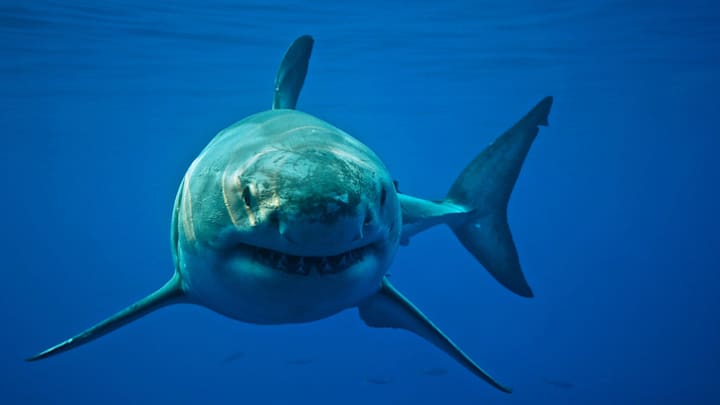The great white shark is one of the most iconic creatures in the animal kingdom. Its fearsome reputation has earned it starring roles in books, blockbuster movies, and countless TV documentaries. But while they’re ubiquitous in pop culture, there’s one place where you won’t find these apex predators, and that’s behind the glass walls of an aquarium.
Many aquariums are home to sharks, including species like nurse sharks and sand tiger sharks. But the most famous member of the group, the great white, is almost always missing from the lineup—which isn’t for a lack of trying. As Vox illustrates in the video below, aquariums have a long and unsuccessful history of trying to keep great white sharks in captivity.
Institutions like SeaWorld and San Francisco's Steinhart Aquarium housed great whites in the ’70s, ’80s, and ’90s—the decades following Jaws mania. But each attempt was met with the same problems: The sharks had trouble eating and swimming, and just generally acted unwell from the moment they arrived. A white shark that lasted more than a week in an aquarium was an anomaly.
While many fish, including shark and ray species, easily adapt to life inside a tank, those same walls often turn out to be fatal for great whites. That’s because they’ve evolved to travel fast and for great distances through the open ocean. When kept inside enclosures, the sharks tend to ram into walls and injure themselves. Sometimes they stop swimming altogether, and for an organism that needs water constantly flowing over its gills to breathe, that can lead to a quick death. Experts also suspect that being surrounded by glass might either confuse or overload the shark's electroreception system, which is used to sense the electrical signals given off by fish in the open ocean, not necessarily inside a glass box.
In 2004 the Monterey Bay Aquarium proved that with a large-enough tank and intensive support, a great white could survive in captivity for an extended amount of time. But the system they developed worked only for smaller baby sharks, and even then it didn’t stop every specimen from bumping into the glass. (The shark that fared the best was released after 198 days, not due to her own health issues, but because she had attacked two other sharks.)
Monterey Bay stopped hosting the sharks in 2011, but aquariums around the world are still attempting to support great whites without taking the same level of precaution. In 2017, an aquarium in Japan announced the acquisition of a 11.5-foot male, the first adult great white ever held in captivity, only for it to die three days later. No matter how awesome they may be to view in person, fans should probably stick to watching great whites during Shark Week.
Discover More Shark Facts:
A version of this story was published in 2017; it has been updated for 2025.
